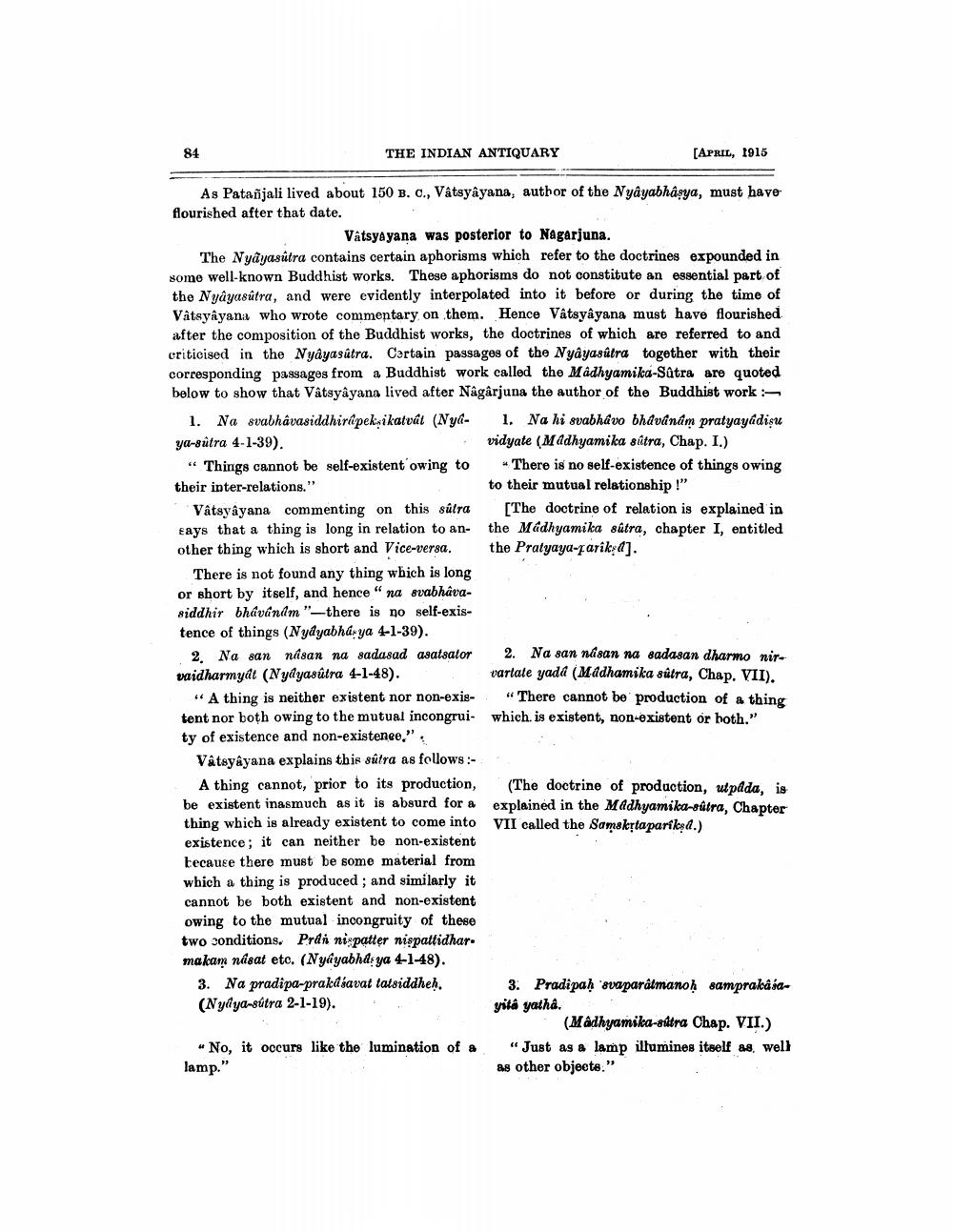________________
84
THE INDIAN ANTIQUARY
[APRIL, 1915
As Patañjali lived about 150 B. C., Vâtsyâyana, author of the Nyayabhâsya, must have flourished after that date.
Vatsyayana was posterior to Nagarjuna. The Nyâyasútra contains certain aphorisms which refer to the doctrines expounded in some well-known Buddhist works. These aphorisms do not constitute an essential part of the Nyâyasútra, and were evidently interpolated into it before or during the time of Vâtsyâyana who wrote commentary on them. Hence Vâtsyâyana must have flourished. after the composition of the Buddhist works, the doctrines of which are referred to and criticised in the Nyayasútra. Certain passages of the Nyâyasútra together with their corresponding passages from a Buddhist work called the Madhyamika-Sätra are quoted below to show that Vâtsyâyana lived after Nagarjuna the author of the Buddhist work
1. Na svabhavasiddhirspeksikatvát (Nya- 1. Na hi svabhavo bhavanam pratyayadişu ya-sìtra 4-1-39).
vidyate (Madhyamika sútra, Chap. I.) " Things cannot be self-existent owing to There is no self-existence of things owing their inter-relations."
to their mutual relationship !" Vâtsyâyana commenting on this súlra [The doctrine of relation is explained in says that a thing is long in relation to an- the Madhyamika sätra, chapter I, entitled other thing which is short and Vice-versa. the Pratyaya-farik,d].
There is not found any thing which is long or short by itself, and hence" na svabhavasiddhir bhavandm"-there is no self-existence of things (Nydyabharya 4-1-39).
2 Na san nisan na sadasad asatsator2. Na san nisan na sadasan dharmo nirvaidharmyat (Nydyasútra 4-1-48).
varlale yada (Madhamika sútra, Chap. VII). "A thing is neither existent nor non-exis- "There cannot be production of a thing tent nor both owing to the mutual incongrui- which is existent, non-existent or both." ty of existence and non-existence." Vâtsyâyana explains this sútra as follows:
A thing cannot, prior to its production, (The doctrine of production, wtpada, is be existent inasmuch as it is absurd for & explained in the Madhyamika-sútra, Chapter thing which is already existent to come into VII called the Samskrtapariksd.) existence; it can neither be non-existent because there must be some material from which a thing is produced ; and similarly it cannot be both existent and non-existent owing to the mutual incongruity of these two sonditions. Prdi ni patter nispatlidhar. makam násat etc. (Nyayabhas ya 4-1-48).
3. Na pradipa-prakásavat tatsiddheh. 3. Pradipah 'svaparálmanoh samprakasa(Nyâya-sútra 2-1-19).
yita yatha.
(Madhyamika-estra Chap. VII.) No, it occurs like the lumination of a “ Just as & lamp illumines itself as well lamp."
as other objeets."




